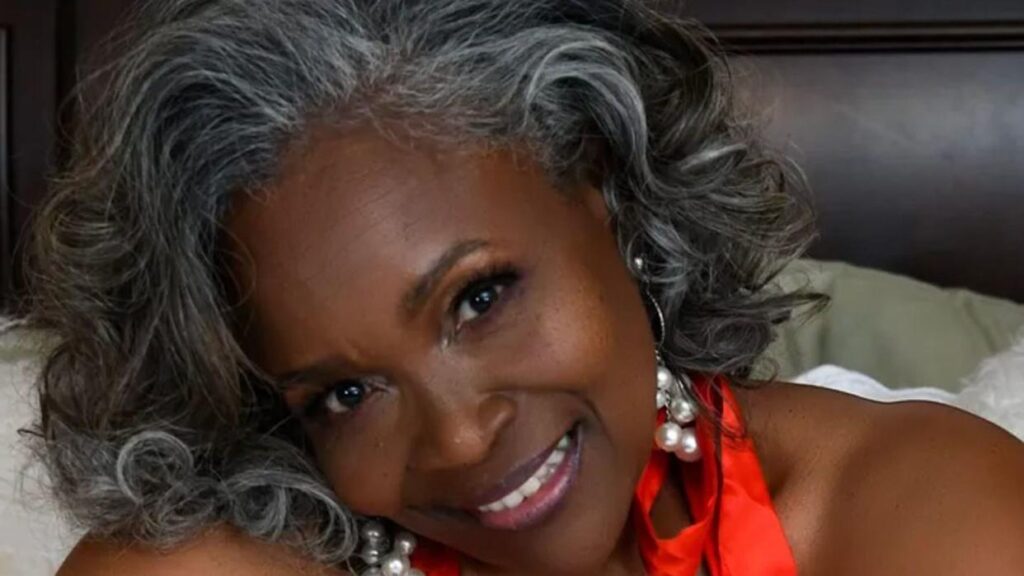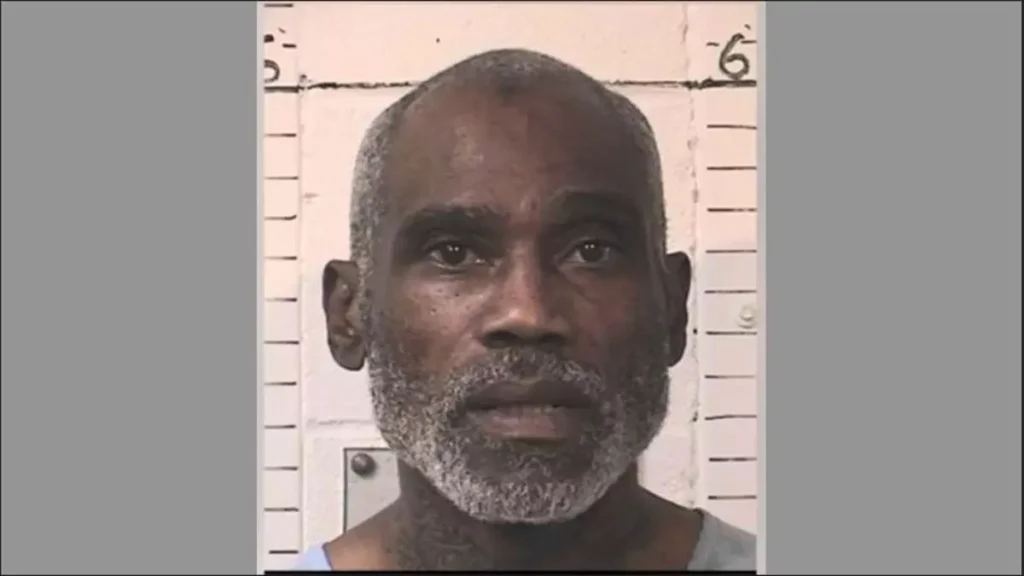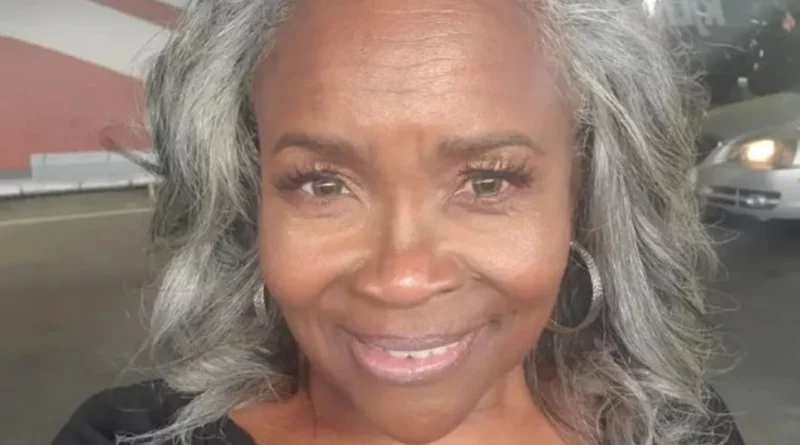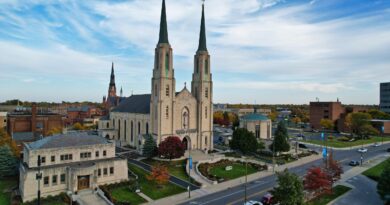Stephanie Dowells Killed by Conjugal Visit Husband at Mule Creek State Prison in Ione California
Stephanie Dowells, affectionately known as “Stevi,” was a 62-year-old hairstylist and small business owner from Los Angeles. She was a devoted mother to two sons and a grandmother to six, often described as the “glue” that held her family together. Her unwavering faith and commitment to uplifting others were central to her identity.
David Brinson, 54, was serving four consecutive life sentences without the possibility of parole for the 1990 execution-style murders of four men during a robbery in Los Angeles. Convicted in 1993, Brinson had been incarcerated since February 1994.
When Stephanie Dowells walked into Mule Creek State Prison on the evening of November 13, 2024, she was doing what she’d done before—visiting her incarcerated husband in the hope of preserving some sense of family unity despite the steel bars between them. But what was meant to be an intimate family moment behind prison walls ended in unspeakable tragedy.
Stevi never made it out alive. By early morning, she was found unresponsive in a conjugal visit trailer and pronounced dead before sunrise. The cause? Strangulation. The suspect? The very man she’d come to see—David Brinson, a convicted quadruple murderer serving life without parole.
Her death shook the foundation of California’s prison visitation system. It ignited questions about safety, responsibility, and how a convicted killer could be granted unsupervised, overnight access to a visitor—his wife. As investigators sifted through timelines, testimonies, and autopsy reports, one thing became clear: Stephanie’s death was more than a personal loss. It was a systemic failure.
In this deep dive, we’ll explore who Stephanie Dowells was, the man behind bars she married, the events leading up to that night, the investigation that followed, and the growing chorus of voices demanding change. This is the story of how one woman’s final visit exposed a haunting crack in the prison system’s foundation.
The Life of Stephanie Dowells

Early Life and Family Background
Stephanie Diane Dowells was never one to chase the spotlight, but for those who knew her, she was a light in their lives. Born and raised in South Los Angeles, Stephanie came from humble beginnings in a tight-knit community that valued resilience, family, and faith. Raised by a single mother, she quickly learned the importance of hard work and compassion—traits that would define her character for decades to come.
As the eldest of four siblings, Stephanie often stepped in as a caretaker, helping raise her younger brothers and sisters while balancing school and part-time jobs. Those early responsibilities helped shape a woman who would later be described as fiercely loyal and deeply nurturing. She wasn’t just a sister—she was a second mother, a protector, and a friend.
Stephanie later attended a local cosmetology school, where she earned her license and eventually opened her own salon. Known as “Stevi” to her regulars, she built a modest but successful business that became a community hub. Her salon was more than a place for a haircut—it was a safe space, a circle of trust where women shared their stories and leaned on Stephanie’s empathetic ear.
Personal Values and Community Impact
Beyond her professional life, Stephanie was a deeply spiritual woman. A regular attendee at her neighborhood church, she often participated in charity drives and support groups, offering free haircuts to the homeless or volunteering for local food banks. Her faith wasn’t performative; it was foundational. It informed every decision she made—from the way she raised her children to the way she treated her clients and friends.
Family was Stephanie’s cornerstone. She had two sons and six grandchildren, and she was actively involved in their lives. Holidays were always held at her house, birthdays were never missed, and family reunions were her favorite events of the year. She prided herself on being the “glue” that held the family together—a role she carried with grace and joy.
Her relationship with David Brinson, while controversial to some in her circle, was one she pursued out of belief in redemption and second chances. Stephanie had long believed that people could change if given the right support and faith. While some questioned her choice, she saw David not as a monster, but as a man who could be reformed. She wrote him letters, visited him regularly, and eventually married him behind prison walls. For Stephanie, it was a gesture of hope—a belief that love could outlast even the darkest past.
But this hope came at a tragic cost.
By the time of her death, Stephanie Dowells was not just a hairstylist or a mother. She was a beacon for those who believed in love, loyalty, and the possibility of transformation. Her untimely death didn’t just silence a life—it shattered the faith of a family and a community that had looked to her for strength.
The Inmate: David Brinson’s Violent Past

Criminal History and Convictions
Before his name became intertwined with that of Stephanie Dowells, David Brinson was known to law enforcement and the justice system for something far darker. In 1990, Brinson was implicated in one of Los Angeles’ most cold-blooded multiple homicides—a quadruple execution that sent shockwaves through the Mid-Wilshire neighborhood.
The crime was brutal. Four men were discovered in a garage apartment, each executed in what authorities described as a “methodical and premeditated” robbery-murder. The motive appeared simple: money and drugs. But the way the crime was carried out—calculated, merciless, and void of hesitation—painted a chilling portrait of the man behind it.
By 1993, after a lengthy trial and mounting evidence including ballistics, witness testimony, and forensic analysis, Brinson was convicted on four counts of first-degree murder. The court showed no leniency. He was sentenced to four consecutive life terms without the possibility of parole—a sentence reserved for the most violent and irredeemable offenders.
What stood out in court wasn’t just the crime, but Brinson’s demeanor. Cold. Detached. Unapologetic. The judge noted his lack of remorse as a determining factor in handing down such a severe sentence. The community, still reeling from the crime, felt a sense of justice. At the time, few could have imagined that decades later, this same man would be at the center of another tragedy—one that would unfold in the most unexpected of places.
Life Behind Bars at Mule Creek State Prison
Mule Creek State Prison, located in Ione, California, is known for housing some of the state’s most hardened criminals. It’s a high-security facility designed to isolate and rehabilitate, but it’s also structured to allow certain freedoms to inmates who show good behavior—within limits. Among those privileges are family visitations, often referred to as “conjugal visits.”
David Brinson, despite the severity of his crimes, became eligible for these visits. Over time, he reportedly maintained a disciplinary record clean enough to qualify for the state’s overnight family visitation program. He enrolled in classes, participated in prison programs, and did what was necessary to earn these limited liberties.
This is where Stephanie Dowells reentered his life—not as a ghost from his past, but as his wife. The two developed a connection during his incarceration, eventually marrying within the confines of the prison. While the decision raised eyebrows among friends and relatives, Stephanie saw something redeemable in David. For her, he was a man molded by past trauma and misguided choices—not just a murderer. Her empathy ran deep, and she was determined to be a part of his rehabilitation journey.
Through her advocacy and belief in restorative justice, she became a regular visitor. Their relationship grew through letters, weekend visits, and shared dreams of spiritual renewal. But no one, not even Stephanie, could fully understand the complexity or danger of placing trust in a man society had deemed irredeemable.
Brinson’s record may have earned him privileges on paper, but it could never erase the violence he had once unleashed—or the capacity for violence that still resided within him.
November 13, 2024: A Night That Changed Everything
The Conjugal Visit Begins
November 13, 2024, began like many other family visitation days at Mule Creek State Prison. For David Brinson, it was a day marked on the calendar, anticipated with careful preparation. For Stephanie Dowells, it was another chance to reconnect, reaffirm her support, and maintain the emotional thread that had bound her to her incarcerated husband.
Stephanie arrived at the facility that afternoon, cleared through the standard security checks, and was escorted to one of the conjugal visit trailers—a modest, apartment-style unit on the prison grounds designed to give inmates and their families a sliver of normalcy. These spaces, equipped with basic amenities, are meant to offer privacy, dignity, and a chance for families to bond beyond the sterile walls of a prison visiting room.
To outsiders, it might seem strange—a convicted murderer being granted such privileges. But to those within the system, it’s part of California’s long-standing commitment to rehabilitation and family cohesion. It’s believed that inmates who maintain strong family connections are less likely to reoffend. In this spirit, Stephanie and David were given time alone—unsupervised, unmonitored, and unguarded.
They were scheduled for a standard overnight stay, which typically lasts 30 to 40 hours. According to records, everything appeared normal that evening. No complaints. No alerts. No calls for help. Nothing to suggest that what was about to happen would be anything other than a quiet night in an unlikely setting.
But somewhere between the closing of that trailer door and the next morning, tragedy struck.
Emergency Call and First Responder Actions
Around 2:00 a.m., the prison’s emergency response system was triggered. David Brinson called for help, reporting that his wife had collapsed and was unresponsive. Correctional officers were dispatched immediately to the family unit. When they arrived, they found Stephanie Dowells lying motionless. Brinson was reportedly calm but visibly shaken.
CPR was initiated on-site. Emergency medical responders from Amador County were called to the scene and took over life-saving efforts. Despite their intervention, Stephanie was pronounced dead at 2:51 a.m.
From the outset, things didn’t add up.
There were no visible injuries that immediately explained her death. There was no sign of forced trauma or an accident within the unit. But there was something off about the scene—something unsettling. Investigators arriving later noted inconsistencies between Brinson’s account and the forensic indicators. The autopsy would later provide the chilling confirmation: Stephanie had been strangled. Her death was not an accident. It was a homicide.
As the news traveled through the prison system and into the wider world, a whirlwind of disbelief and outrage followed. How could a woman be murdered inside a prison—by someone already serving time for four other murders? How could such a thing happen during an approved and scheduled visit under the state’s watchful eye?
The timeline, short as it was, now marked a permanent rupture in the lives of Stephanie’s family and raised deeply uncomfortable questions for the public and prison officials alike.
Investigations and Autopsy Revelations
Strangulation Confirmed: The Autopsy Report
In the days that followed Stephanie Dowells’ death, grief turned into a gnawing demand for answers. The preliminary reports only deepened suspicions. The official autopsy, performed by the Amador County Coroner’s Office, delivered a chilling confirmation: Stephanie had been manually strangled.
The injuries were unmistakable. Bruising around the neck, broken hyoid bone, and the presence of petechial hemorrhages in the eyes—all classic indicators of strangulation. There was no evidence of accidental injury, medical emergency, or self-infliction. This was not a natural death. It was a deliberate act of violence.
The time of death was estimated to be shortly before Brinson had raised the alarm at 2:00 a.m. But that raised its own questions. Why the delay? How long had he waited before calling for help? Had there been a struggle that was silenced by fear, or was the attack sudden and calculated?
The coroner’s findings left little room for doubt: Stephanie was the victim of homicide, and the killer had been alone with her in that locked visitation trailer.
While the official report did not name David Brinson directly, the implication was unavoidable. He was the only other person present. He was already serving four life sentences for brutal murders. And now, he was the prime suspect in his wife’s death.
Law Enforcement and Prison Response
The response from Mule Creek State Prison was swift—at least in procedural terms. Brinson was immediately removed from the general population and placed in administrative segregation pending investigation. His visitation privileges were permanently revoked, and he was placed under close observation.
Internally, the California Department of Corrections and Rehabilitation (CDCR) initiated a review of its family visitation program, particularly in high-security prisons. Officials faced mounting pressure not only from the public but also from lawmakers and prison reform advocates, many of whom questioned how a man with Brinson’s history could be deemed suitable for unsupervised, overnight visits.
The Amador County Sheriff’s Office took over the criminal investigation. Detectives began reviewing surveillance footage from the surrounding prison grounds, although there were no cameras inside the conjugal trailer. Interviews were conducted with prison staff, visitors who were on the grounds that day, and other inmates. Every detail of Brinson’s behavior leading up to the visit was combed over.
But as the investigation progressed, a disturbing pattern emerged—not of oversight, but of systemic tolerance. Brinson had followed the rules, participated in rehabilitation programs, and maintained a clean disciplinary record for years. On paper, he had earned the right to see his wife.
And yet, no checklist could account for what lurked beneath the surface.
As the investigation deepened, prosecutors weighed whether to bring new charges against Brinson. While he was already serving life without parole, a formal murder charge in Stephanie’s case would send a clear message about accountability, even within the walls of a prison.
For Stephanie’s family, however, legal consequences alone would never be enough. They wanted answers. They wanted to know what really happened inside that trailer. And above all, they wanted to ensure no other family would have to endure what they were going through.
Why Did He Murder His Wife?
That’s one of the most painful and unresolved parts of this case: no definitive motive has been publicly confirmed yet. Because the investigation is still ongoing and David Brinson hasn’t officially spoken or been charged at the time of reporting, the “why” behind the strangulation remains unanswered.
However, there are several speculative theories:
- A personal dispute or argument during the visit may have escalated unexpectedly.
- Some reports suggest Stephanie was encouraging Brinson to “change” or “become better,” possibly creating emotional pressure.
- Others suspect control or possessiveness, which can sometimes arise in relationships shaped within confined, high-stress environments like prisons.
- Given Brinson’s history of calculated, violent behavior, it’s also possible that his violent tendencies resurfaced, despite years of apparent good behavior.
What makes this even more tragic is that Stephanie genuinely believed she was helping someone change. The answer to “why” may one day come through legal proceedings or testimony—until then, we’re left with a haunting silence in place of understanding.
The Aftermath and Public Outcry
Family Demands Justice
In the wake of Stephanie Dowells’ shocking death, her family found themselves grappling with a loss that was both deeply personal and painfully public. What began as private mourning quickly transformed into a public crusade for answers, accountability, and change.
Her son, Armand Torres, became the family’s most vocal representative. In interviews and public statements, he painted a vivid portrait of a woman who had dedicated her life to family, faith, and forgiveness. “My mother was love in human form,” he said, choking back tears. “She believed in second chances, even when the world told her not to.”
That belief had led her to David Brinson—and ultimately to her death.
The family demanded an immediate investigation not only into the homicide itself but into the prison policies that had allowed such a scenario to unfold. They questioned why a man serving life for multiple murders could participate in an unsupervised overnight visitation program. They wanted to know what oversight, if any, existed for conjugal visits, and whether psychological evaluations were truly effective in identifying risk.
Torres and other relatives held vigils outside Mule Creek State Prison, holding candles and posters that read, “Justice for Stevi” and “Prisons Should Protect, Not Endanger.” The pain in their voices was echoed by many who believed the system had failed—not just in oversight, but in recognizing the dangers of mixing unmonitored freedom with violent histories.
Their call for justice wasn’t about vengeance. It was about change.
Calls for Reform in Prison Visitation Protocols
Stephanie’s death sent ripples through California’s correctional system, shaking loose uncomfortable questions about how inmate privileges are granted and monitored. While family visitation has long been seen as a humane aspect of incarceration—especially for inmates who demonstrate good behavior—the tragedy at Mule Creek sparked renewed debate over where the line should be drawn.
Public officials and prison reform advocates found themselves on opposing sides of a fragile line between compassion and caution. Some defended the integrity of the visitation program, citing data that family connections reduce recidivism and promote rehabilitation. Others argued that no program should offer this level of privacy to inmates with violent, irreversible records.
Lawmakers began discussing revisions to California’s prison visitation policies, including:
- Restricting overnight visits for inmates serving life without parole for violent crimes.
- Increasing psychological evaluations prior to granting visitation privileges.
- Installing silent emergency alarms or surveillance systems near visitation units.
- Requiring periodic re-evaluations of eligibility for ongoing visitation rights.
Activists who had long supported humane treatment of inmates now found themselves walking a tighter moral rope. Could rehabilitation and public safety coexist in a single policy? Could the system prevent tragedies like Stephanie’s while still fostering hope and reconnection for less dangerous inmates?
Some survivors and victims’ rights groups used the incident to advocate for tougher standards, while others demanded that the state at least admit fault in this particular case. The Dowells family continued to push, not for the program’s abolition, but for safeguards they believe could have saved Stephanie’s life.
In the public sphere, the case became a lightning rod. Talk shows, social media threads, and community forums exploded with opinion. Some sympathized with Brinson’s wife, believing she had simply placed her trust in the wrong person. Others questioned her judgment entirely. But few could deny that what happened inside that trailer on November 13 exposed a serious vulnerability in how prisons weigh risk against privilege.
Stephanie Dowells became more than a victim—she became a symbol. A symbol of how good intentions, when left unchecked by due caution, can end in irreversible consequences. And her family, still mourning, pressed forward with a mission to make sure her death wasn’t in vain.
Conclusion
The story of Stephanie Dowells is a haunting reminder that even within the confines of a secure prison, danger can still find its way into places meant for healing and connection. What was supposed to be a routine family visit—an opportunity for reconnection, intimacy, and hope—turned into an irreversible nightmare that shattered a family and rattled a system.
Stephanie’s life, built on compassion, resilience, and faith, was extinguished in the very environment that should have offered her safety. Her death forces us to confront the uncomfortable intersection between rehabilitation and risk. While family visits may foster emotional bonds and reduce recidivism for many, this tragedy exposes a glaring gap in how we evaluate those privileges for inmates with histories of extreme violence.
David Brinson may have met the procedural requirements for visitation, but no checklist could account for what still lurked beneath the surface. He was a man already convicted of extinguishing four lives. That history, though years behind, was not erased by time or good behavior—it was merely suspended, waiting.
Stephanie believed in second chances. She embodied hope and forgiveness. And that’s what makes her death all the more tragic. Her belief in rehabilitation wasn’t naïve—it was noble. But the system that was supposed to safeguard her made no such distinction. It offered no special protections. It extended privilege without protection. And now, her family bears the unbearable cost.
As the investigation continues and policies are reviewed, the broader question remains: How do we protect those who walk into prisons not as criminals, but as loved ones trying to maintain connection? How do we ensure that systems designed to rehabilitate don’t instead become settings for renewed harm?
Stephanie Dowells’ story should never be reduced to a headline or a footnote in a correctional manual. It should stand as a stark, painful lesson—and a call to act.
Her life mattered. Her death must matter even more.
Discover more from City Towner
Subscribe to get the latest posts sent to your email.




